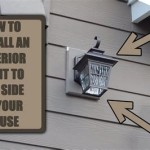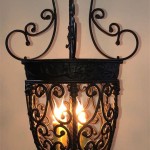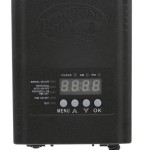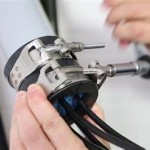Low Voltage Outdoor Soffit Lighting
Low voltage outdoor soffit lighting offers a blend of aesthetic appeal and practicality for homeowners seeking to enhance their property's curb appeal and security. Operating on 12 volts rather than the standard 120 volts of household wiring, these lighting systems provide several advantages, including energy efficiency and simplified installation.
Key Advantages of Low Voltage Soffit Lighting
Low voltage systems present distinct benefits:
- Safety: Reduced risk of electric shock during installation and maintenance.
- Energy Efficiency: Lower operating costs due to decreased power consumption.
- Ease of Installation: Simpler wiring and often DIY-friendly.
- Design Flexibility: Availability in various styles and sizes to suit diverse architectural designs.
Illuminating Architectural Features
Soffit lighting, strategically placed under the eaves of a house, highlights architectural details and adds depth to the overall design. It washes the exterior walls with gentle light, creating a welcoming ambiance and enhancing the visual appeal of the home. This lighting technique can be particularly effective in showcasing unique rooflines, textured siding, and decorative elements.
Enhancing Safety and Security
Beyond aesthetics, low voltage soffit lighting contributes to a safer environment. Illuminating the perimeter of the house deters potential intruders and reduces the risk of accidents by providing clear visibility around walkways and entrances. This increased visibility is particularly beneficial during nighttime hours.
Choosing the Right Fixtures
Selecting appropriate fixtures is crucial for achieving the desired lighting effect. Consider factors such as the style of the home, the existing exterior finishes, and the overall lighting plan. Popular choices include:
- Recessed Lights: Offer a clean, unobtrusive look integrated into the soffit.
- Surface-Mounted Lights: Provide a more prominent lighting solution.
- LED Lights: Known for their energy efficiency and long lifespan.
- Halogen Lights: Produce a brighter, whiter light.
The choice between LED and halogen depends on individual preferences for light color temperature and energy efficiency. LED lights generally offer longer lifespans and reduced energy consumption.
Planning Your Lighting Layout
A well-planned layout ensures optimal illumination and avoids dark spots. Consider the following factors when designing your soffit lighting layout:
- Spacing: Evenly spaced fixtures create a balanced and uniform light distribution.
- Beam Angle: The beam angle determines the spread of light; wider angles provide broader coverage.
- Light Output (Lumens): Higher lumens produce brighter light.
- Color Temperature (Kelvin): Choose a color temperature that complements the home's exterior and creates the desired ambiance.
Installation Considerations
While low voltage systems are generally easier to install than high voltage wiring, careful planning and adherence to safety guidelines are essential. Key considerations include:
- Transformer Location: Place the transformer in a dry, accessible location.
- Wiring: Use appropriate low voltage wiring and connectors.
- Safety Precautions: Always disconnect power before working with any electrical components.
Consulting a qualified electrician is recommended for complex installations or if you are uncomfortable working with electrical systems.
Maintenance and Troubleshooting
Maintaining your low voltage soffit lighting system ensures its longevity and optimal performance. Regularly inspect fixtures for damage and replace any burned-out bulbs promptly. Keep the transformer and wiring connections dry and free from debris. Troubleshooting common issues, such as flickering lights or power outages, can often be resolved by checking the transformer, wiring connections, and bulb integrity.
Long-Term Benefits
Investing in low voltage outdoor soffit lighting provides numerous long-term benefits, including increased property value, enhanced curb appeal, improved safety, and reduced energy costs. The relatively low maintenance requirements and long lifespan of LED fixtures further contribute to the cost-effectiveness of this lighting solution.
Integration with Smart Home Systems
Modern low voltage lighting systems can often be integrated with smart home technology, allowing for automated control and customization. Features like timers, motion sensors, and remote control access via smartphone apps offer increased convenience and energy savings. This integration allows homeowners to schedule lighting, adjust brightness levels, and even change the color temperature based on their preferences and needs.

Exterior Recessed Soffit Lighting Aspectled

8 Soffit Lighting Ideas For Exterior Perfection Dekor

Recessed Soffit Lights Why Up Lighting Is The Better Alternative Landscape Pro

Outdoor Led Soffit Lighting Astoria Co

Outdoor Soffit Lighting Kit Led Recessed Downlights Dekor

Led Soffit Lights Outdoor Recessed Lighting Exterior Modern

Soffit Lighting Jellyfish

Recessed Soffit Lights Why Up Lighting Is The Better Alternative Landscape Pro

Outdoor Soffit Led Low Voltage Dc Programmable Dimmable Smart Home Light Lighting Exterior Classic House

8 Soffit Lighting Ideas For Exterior Perfection Dekor
Related Posts







